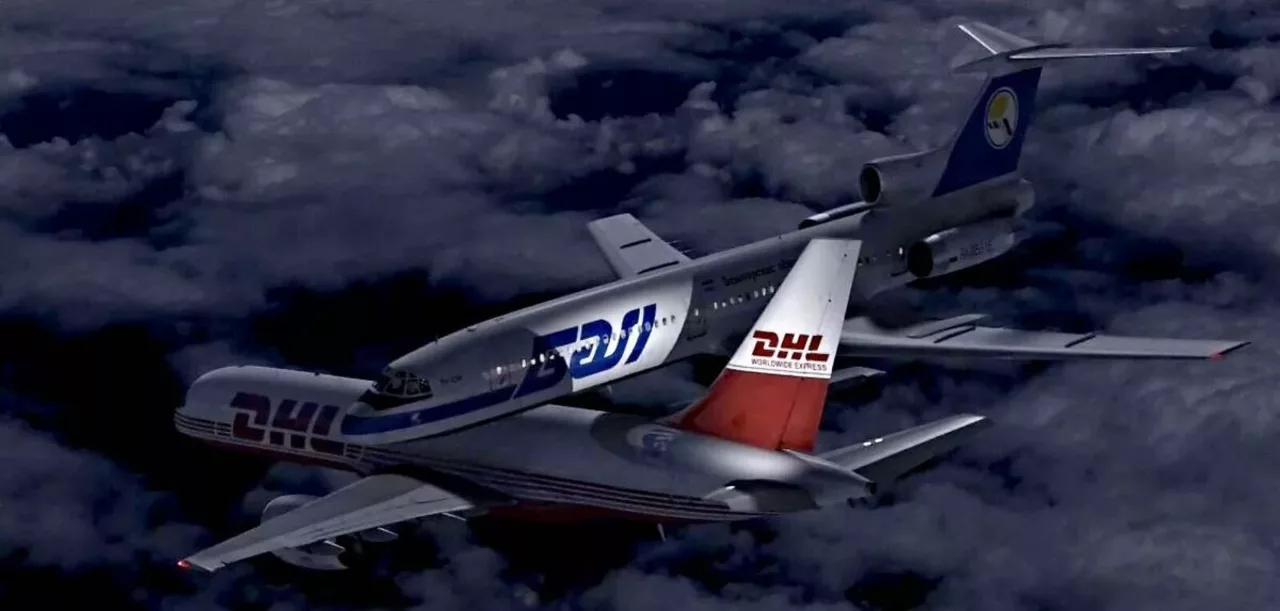Introduction: The Possibility of Mid-Air Collisions
As a frequent traveler and aviation enthusiast, I often find myself wondering about the safety of air travel. One question that has always intrigued me is whether or not two planes can collide mid-air. In this article, I will explore this topic and delve into the various aspects of mid-air collisions, including the likelihood of such incidents, the preventative measures in place, and some notable historical examples of mid-air collisions. So, fasten your seatbelts and join me as we take a closer look at the world of aviation and the chances of two planes colliding mid-air.
Understanding Airspace and Air Traffic Control
To better comprehend the possibility of mid-air collisions, it's essential to understand how airspace and air traffic control work. Airspace is divided into different classes, each with its own set of rules and regulations. These rules are designed to ensure the safe and efficient flow of air traffic, with aircraft flying at specific altitudes and following prescribed routes. Air traffic controllers play a crucial role in managing the flow of planes, providing pilots with crucial information and instructions to maintain safe separation between aircraft.
Air traffic control uses radar technology, communication systems, and other tools to monitor the position of aircraft in the sky. Controllers are responsible for maintaining a safe distance between planes, typically at least 3 miles laterally and 1,000 feet vertically. By adhering to these separation standards, the risk of mid-air collisions is significantly reduced.
Collision Avoidance Systems: How Planes Stay Safe in the Sky
One of the most critical technologies that help prevent mid-air collisions is the Traffic Alert and Collision Avoidance System (TCAS). TCAS is an onboard system that monitors the proximity of other aircraft and provides pilots with information and guidance to maintain a safe distance. If two planes get too close, TCAS will issue a traffic advisory, alerting the pilots to the presence of nearby aircraft. If the risk of collision increases, TCAS will issue a resolution advisory, instructing pilots on the appropriate action to take, such as climbing, descending, or maintaining their current altitude.
Another essential technology is the Automatic Dependent Surveillance-Broadcast (ADS-B) system. ADS-B allows aircraft to broadcast their position, altitude, and other data to air traffic control and other planes in the vicinity. This real-time information exchange helps pilots and controllers maintain situational awareness and further reduces the risk of mid-air collisions.
Human Factors: The Role of Pilot Training and Decision-Making
While technology plays a significant role in preventing mid-air collisions, human factors are also crucial. Pilots undergo rigorous training to ensure they can safely operate their aircraft and respond to potential hazards, including the risk of mid-air collisions. This training includes learning how to interpret TCAS alerts and the appropriate actions to take to maintain a safe distance from other planes.
Additionally, pilots must maintain constant situational awareness and communicate effectively with air traffic control and other pilots. Good decision-making skills are essential, as pilots may encounter complex and rapidly changing situations that require them to make quick judgments to ensure the safety of their aircraft and passengers.
Notable Mid-Air Collisions in Aviation History
Despite the many safety measures in place, mid-air collisions have occurred in the past. One of the most notable incidents was the 2002 Überlingen mid-air collision, where a Russian passenger plane and a cargo plane collided over southern Germany, resulting in the loss of 71 lives. The investigation into the accident revealed that both human factors and shortcomings in the TCAS system contributed to the collision.
Another tragic example is the 1978 Pacific Southwest Airlines Flight 182 collision with a small private aircraft over San Diego, California, which killed 144 people. The accident was attributed to the PSA crew's failure to maintain visual separation from the smaller plane and a lack of clear communication between the pilots and air traffic control.
Reducing the Risk: The Future of Mid-Air Collision Prevention
While the risk of mid-air collisions cannot be entirely eliminated, ongoing advancements in technology and improvements in pilot training and air traffic control procedures continue to reduce this risk. For example, new satellite-based navigation systems, such as NextGen in the United States, are being developed to enhance the precision of aircraft tracking and communication, further minimizing the risk of mid-air collisions.
Additionally, research is being conducted on new collision avoidance systems that could offer even more advanced warning and guidance for pilots. The aviation industry is continually striving to improve safety and reduce the risk of accidents, including mid-air collisions.
Conclusion: The Reality of Mid-Air Collisions
In conclusion, while the possibility of two planes colliding mid-air is a valid concern, the likelihood of such an event is extremely low. The combination of strict airspace regulations, advanced technologies like TCAS and ADS-B, and the skill and training of pilots and air traffic controllers all contribute to the high safety standards of modern aviation. While we can never completely rule out the risk of mid-air collisions, we can take comfort in knowing that the aviation industry is continuously working to improve safety and reduce the chances of such tragic incidents occurring.





